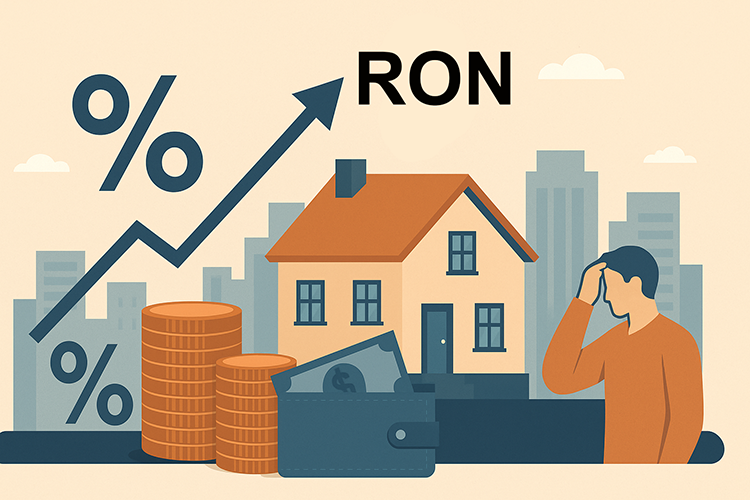Mortgage Costs Rise as Wages Struggle to Keep Pace in Romania
Romanian households face growing pressure from mortgage repayments in 2025, as a combination of higher property prices and elevated interest rates weighs on affordability.
According to data from the National Institute of Statistics (INS), the average net monthly wage in July stood at around RON 5,517 (€1,088), only modestly higher than a year earlier. Over the same period, housing prices in Bucharest have continued to climb. Market records compiled by the National Agency for Cadastre and Land Registration (ANCPI) point to apartment prices in the capital averaging close to €1,800–1,900 per square metre, with new-build units often exceeding €2,000 per square metre.
At these levels, a typical 50 square metre apartment in Bucharest can cost between €90,000 and €105,000. Financing such a purchase with a 25-year mortgage exposes buyers to interest rates that have risen steadily since 2022. Figures from the National Bank of Romania (BNR) show that average mortgage rates on new loans hovered between 5.5% and 6.0% in mid-2025, reflecting the central bank’s decision to maintain its benchmark rate at 6.5%.
This combination of rising prices and higher borrowing costs means monthly repayments now absorb a larger share of household income. A €90,000 loan at current rates translates into repayments of roughly €580–600 per month, while a €105,000 loan requires closer to €670 per month. Measured against the average national wage, this represents over half of monthly earnings. For residents of Bucharest, where salaries are typically about a quarter higher than the national figure, the burden is somewhat lighter but still significant.
Regulators remain alert to the risks. The BNR enforces a ceiling that limits monthly debt service to 40% of net income when banks grant new loans, a safeguard introduced to reduce the likelihood of defaults. Even so, households taking on mortgages at today’s rates often need higher incomes, larger down payments, or family support to stay within the limits.
The picture contrasts with the boom years before the global financial crisis, when many borrowers were granted loans that far exceeded sustainable income ratios. Although affordability is again tightening, Romania’s housing finance market remains better capitalised and more conservative than in the past.
Looking ahead, analysts note that further wage growth and a gradual easing of interest rates would be needed to restore balance between incomes and borrowing costs. Until then, mortgage affordability will remain a pressing concern, particularly for first-time buyers in Bucharest and other large cities.








